Abstract
The y-2 mutant of Chlamydomonas reinhardi differs from the wild type in being unable to synthesize chlorophyll in the dark and in a requirement for catalytic amounts of light for organotrophic growth. Light-grown y-2 cells given acetate are capable of the equivalent of 9 to 10 divisions when placed in darkness. Cultures adapt gradually to dim white or monochromatic light and after 8 to 10 generations assume a steady state with respect to growth and pigment content.
Two energetically distinct light reactions promote the growth of y-2 on acetate. A low energy requirement is satisfied at about 0.1 μw/cm2 of white light which results in a growth rate of 0.5 log unit per day. A high energy response, which saturates at 2000 μw/cm2 and a growth rate of 0.9 log unit per day, is probably attributable to net photosynthesis. An action spectrum for the low energy growth response contains a broad major peak in the blue between 462 and 502 nm and a minor peak in the far-red between 700 and 736 nm. All intermediate wavelengths have low but positive activity. The action spectrum was investigated with y-2 cultures that were grown for many generations under steady-state conditions in growth-limiting monochromatic light. Many wavelengths resulted in a selection pressure that strongly favored a strain of green-in-the dark cells that usually appeared after 5 to 8 generations of light-limited growth. Under the low light intensity of these experiments (0.15 ± 0.05 μw/cm2) the green strain was much richer in chlorophyll than y-2 and divided more rapidly with the consequence that y-2 was generally replaced in the course of a few generations. Consideration of the results led to the conclusion that both chlorophyll and carotenoids act as photoreceptors in the low energy growth response of y-2.
Full text
PDF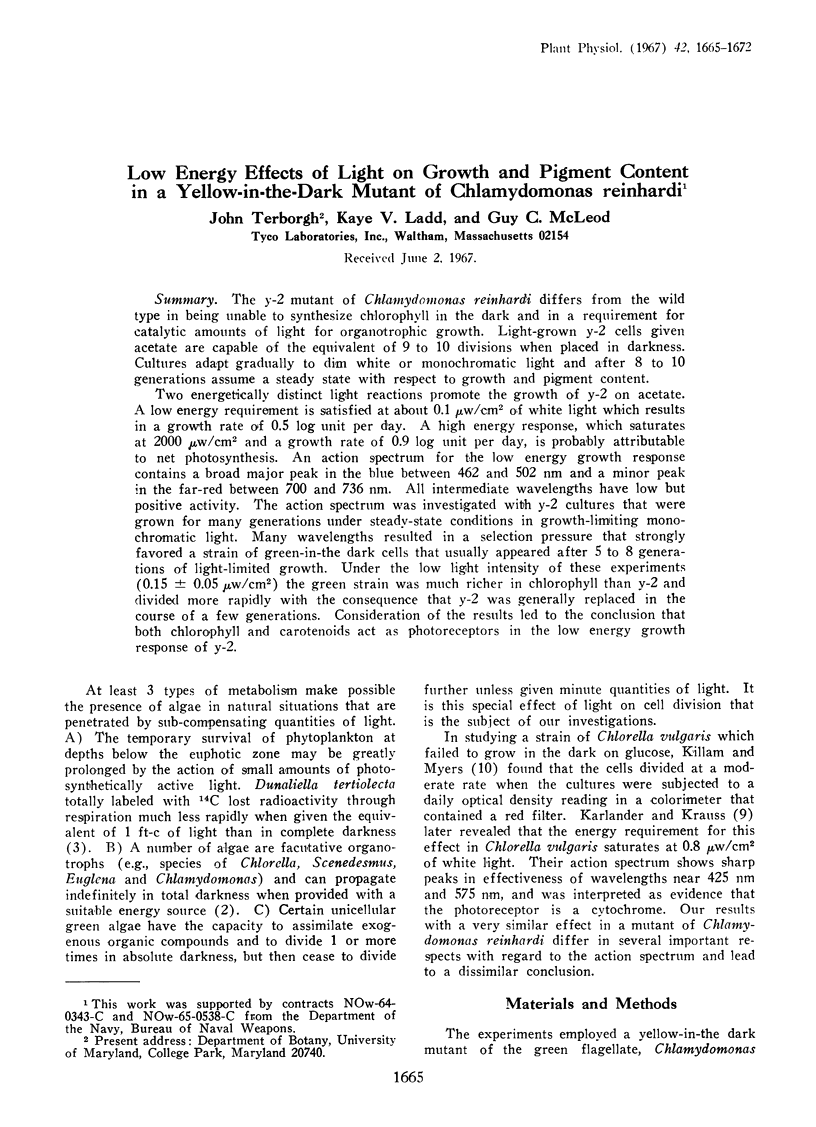
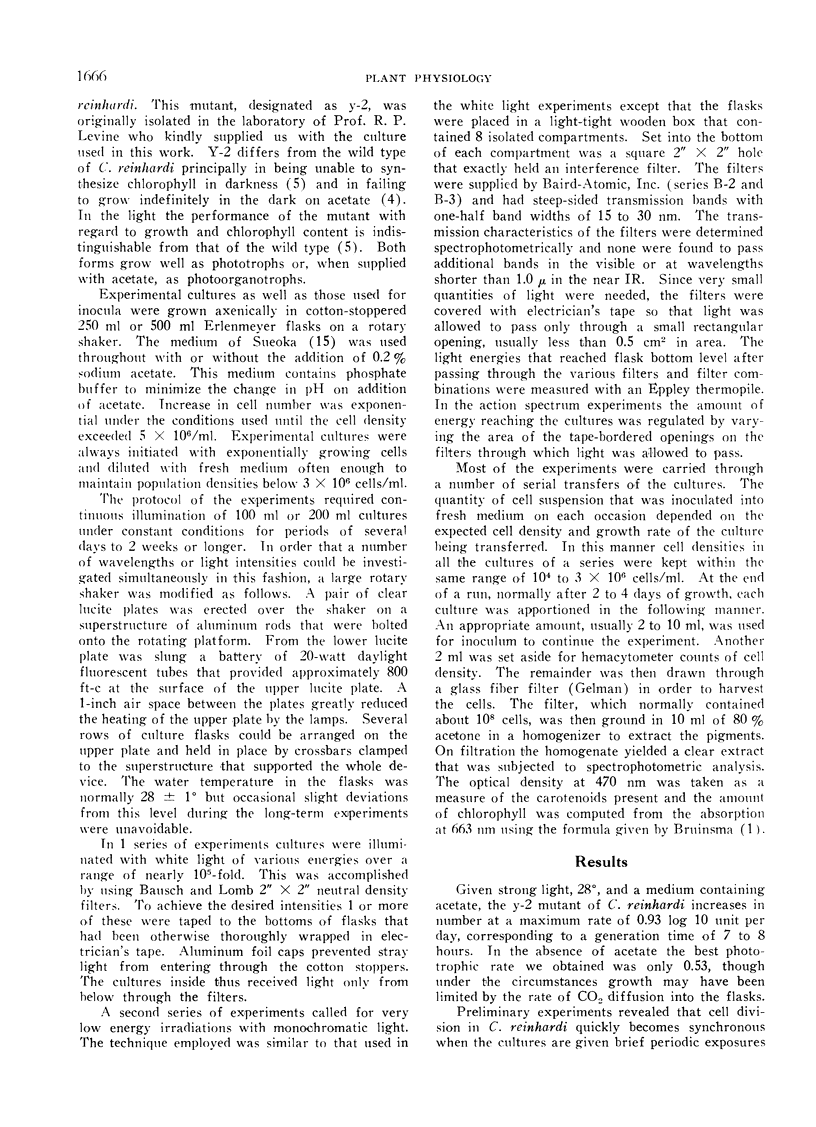
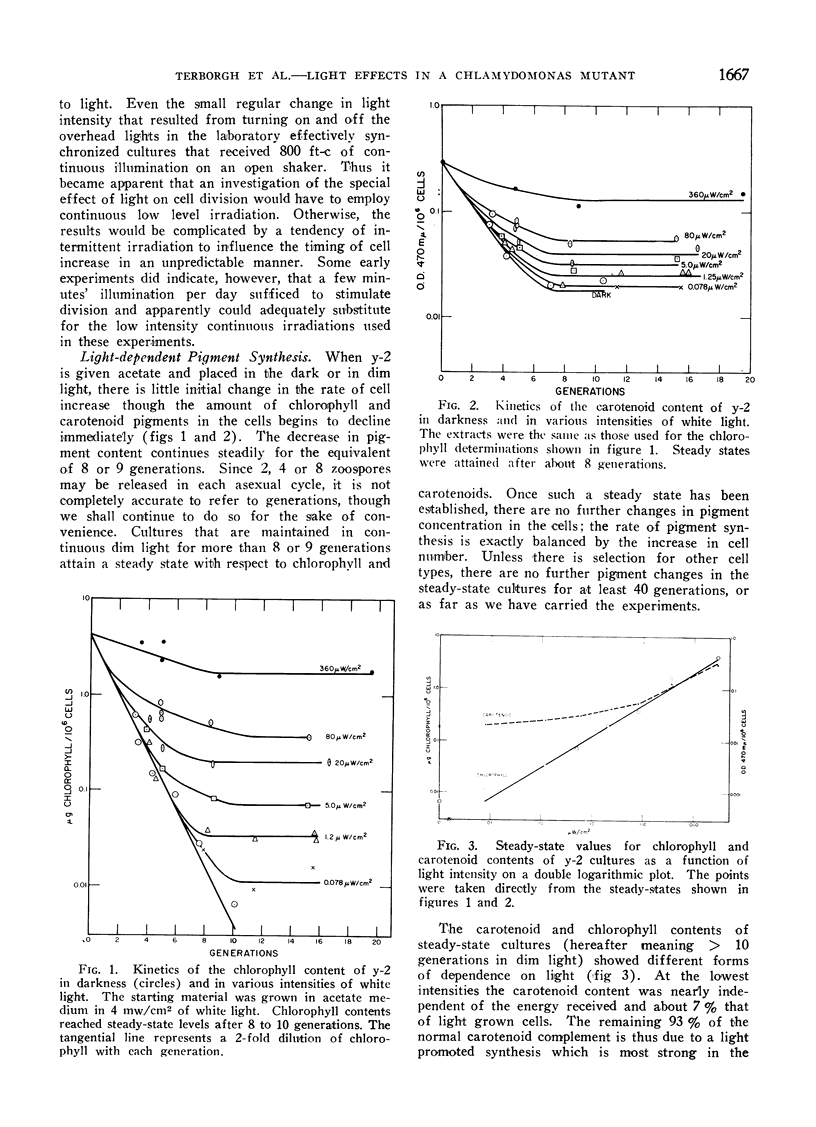
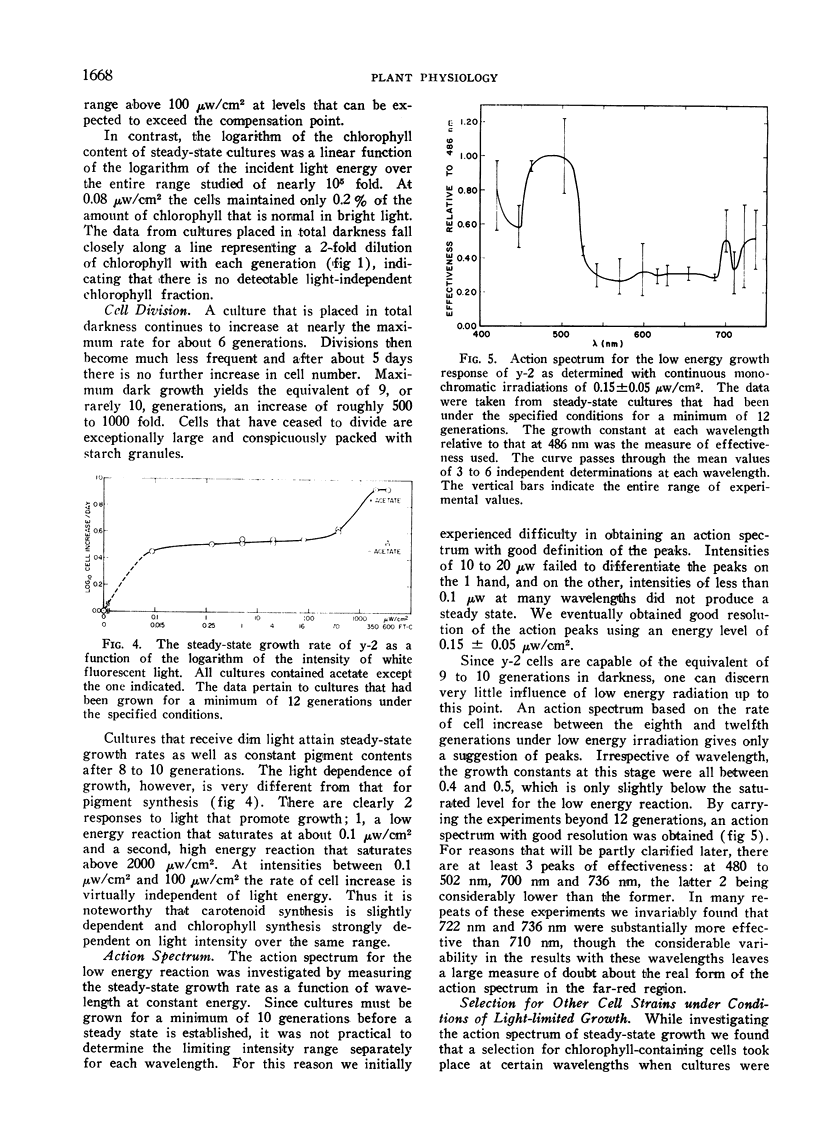
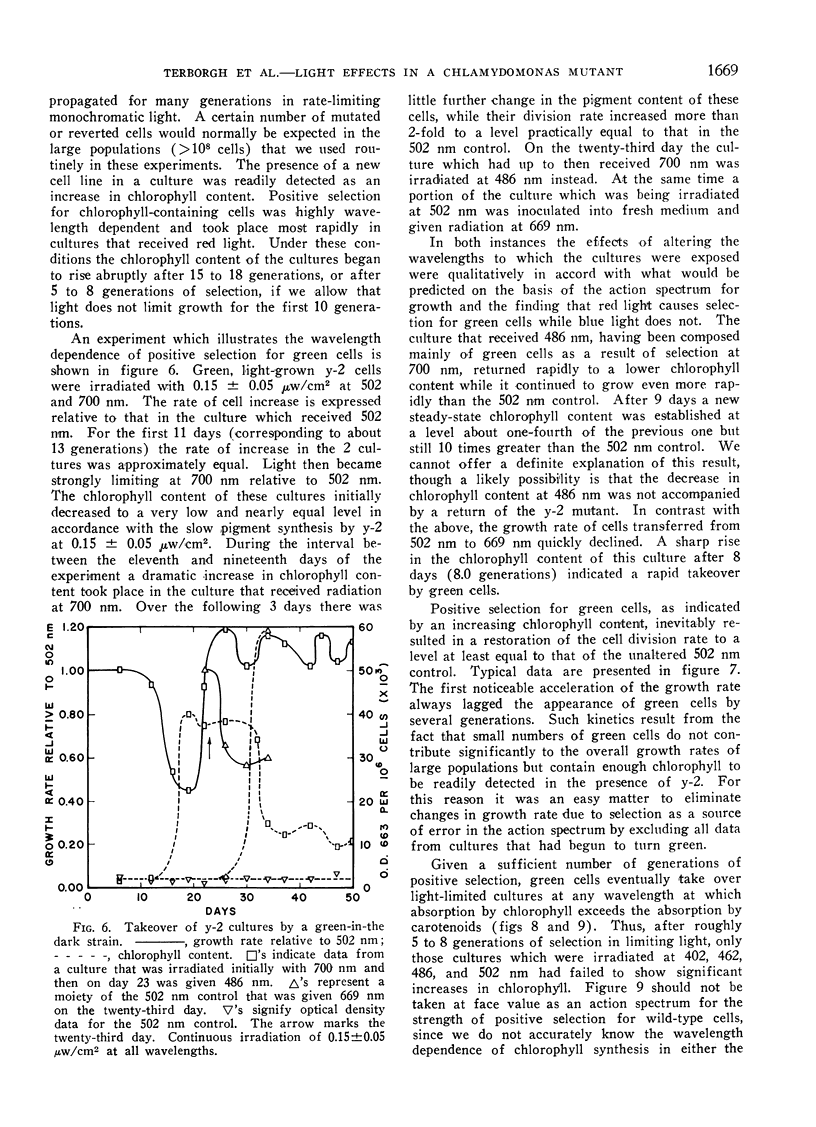

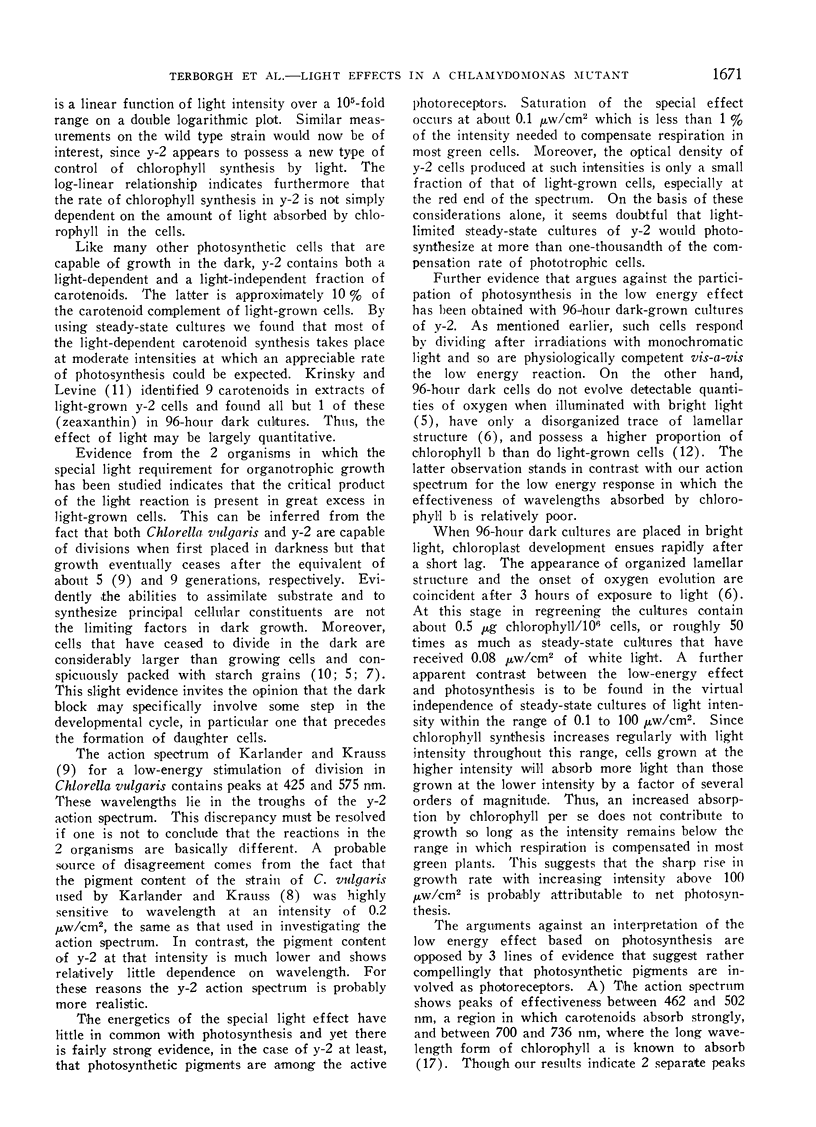
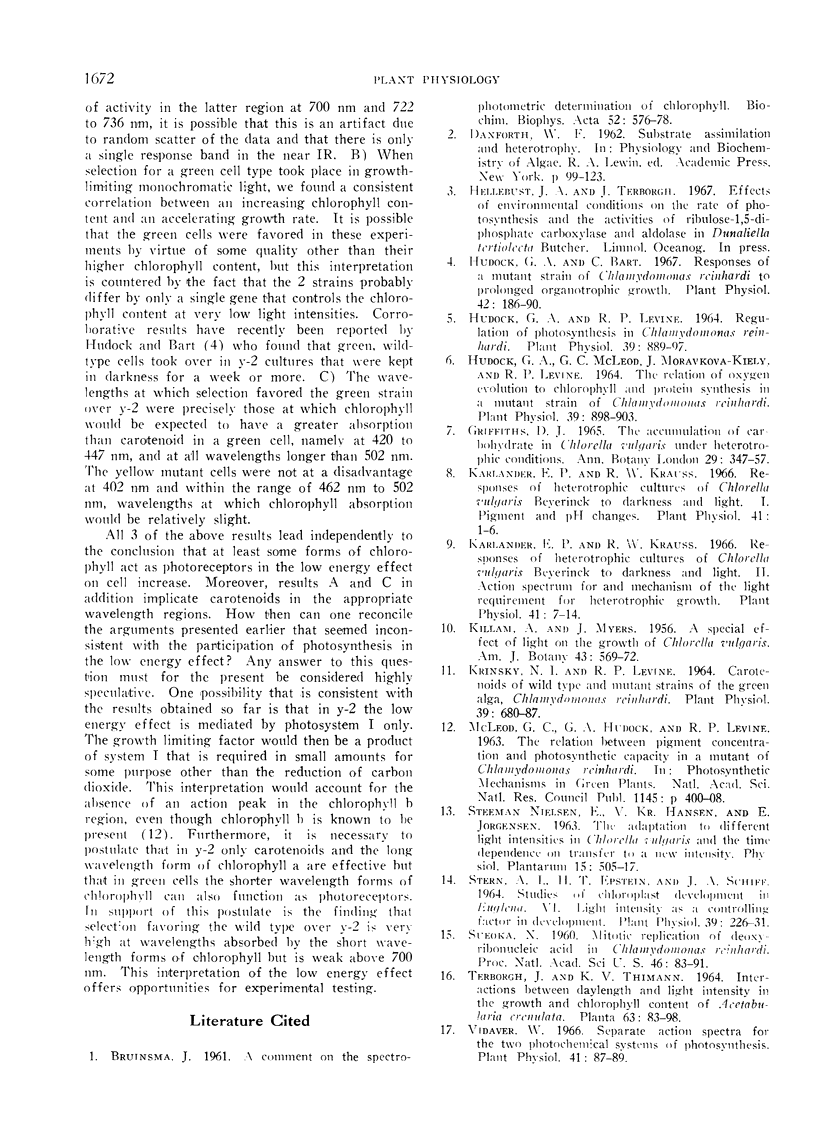
Selected References
These references are in PubMed. This may not be the complete list of references from this article.
- Hudock G. A., Levine R. P. Regulation of Photosynthesis in Chlamydomonas reinhardi. Plant Physiol. 1964 Nov;39(6):889–897. doi: 10.1104/pp.39.6.889. [DOI] [PMC free article] [PubMed] [Google Scholar]


